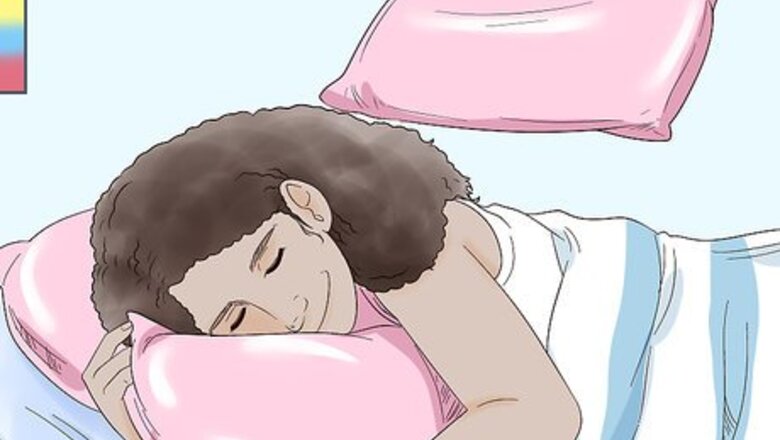
views
Keeping Black Hair Healthy
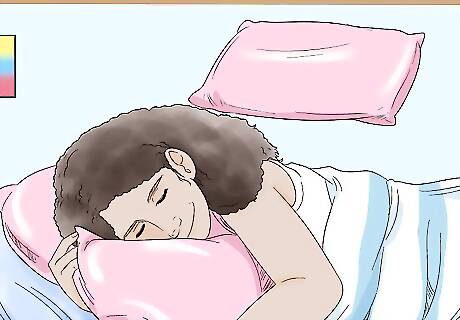
Sleep on a satin or silk pillowcase to prevent frizz, breakage, and dryness. This way, your hair can stay healthy and won't break or tear. Cotton pillowcases tend to snag hair and create tiny rips and tears. They also tend to suck the moisture out of your hair, which can make it even more frizzy and brittle. Satin or silk pillowcases are also great for skin, as they don't draw out moisture the way cotton pillowcases do. Wash the silk pillowcases once a week. You can do it by hand or using a washing machine. Check the label before washing them. If you can't get a satin or silk pillowcase, consider tying your hair up at night with a satin or silk scarf instead.

Moisturize the ends of your hair. You can use a moisturizing serum, or you can use a natural oil, such as coconut oil, castor oil, or olive oil. This will help prevent your hair from getting dry, snagging on things, and breaking. It will also help prevent split or damaged ends.
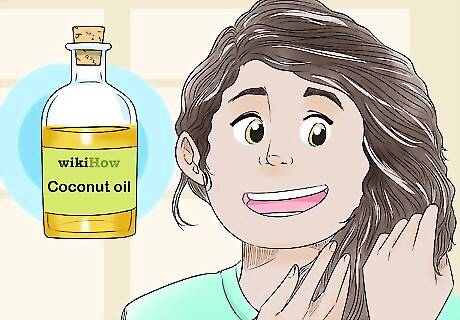
Apply some oil to natural hair every day and straightened/relaxed hair twice a week. Look for products that contain natural oils, such as almond, Argan, coconut, and jojoba. You can also just use natural oils straight from the bottle instead. Skip products with petrolatum, lanolin, and mineral oils. They will only dry your hair out and stop moisture from penetrating the shaft. A little bit of oil goes a long way. Start with a small amount, about the size of a dime, and add more as necessary. After washing your hair, apply a moisturizing leave-in conditioner, then add the oil of your choice. This seal in moisture and ensure that your hair stays healthy.
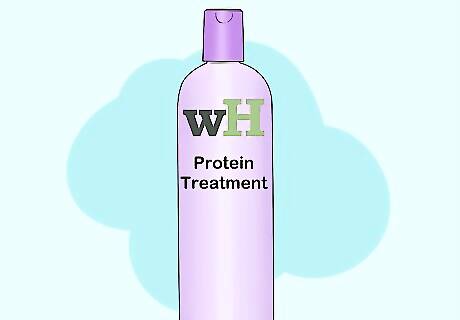
Try a protein treatment. Protein will make your hair less prone to breakage and over-moisturizing. Your hair will be a lot shinier too. Be careful not to overuse protein in your hair otherwise it will start to snap off. You can use a store-bought treatment or try your hand at making a DIY hair mask at home.

Use a hot oil treatment twice a month to add moisture and elasticity to your hair. Heat ½ to 1 cup (120 to 240 milliliters) of oil in a double-boiler or a jar in a pot of hot water. Part your hair into several sections, then use an applicator bottle to apply the oil. Massage the oil into your hair and scalp, then cover your hair with a shower cap for 30 minutes. Once the time is up, wash your hair as usual with shampoo. If you don't want to warm up the oil in advance, you can apply it then sit under a hooded hair dryer for 30 minutes while wearing a shower cap. Don't use a microwave to heat the oil, or it will lose its nutrients. If you don't have a shower cap, you can wrap a damp, warm towel around your hair instead. You can use any of the following oils: Argan, avocado, castor, coconut, jojoba, olive, sesame, and sweet almond.
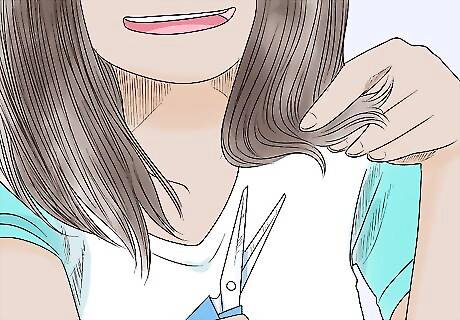
Trim your split ends as soon as possible. Even healthy hair is prone to getting split ends, so be sure to check your hair for them regularly. The longer you leave them unchecked, the further the damage will creep up the hair shaft. Don't reply on "split end mending" serums, at they are only temporary fixes; they are not permanent and will not mend your split ends.
Washing Black Hair
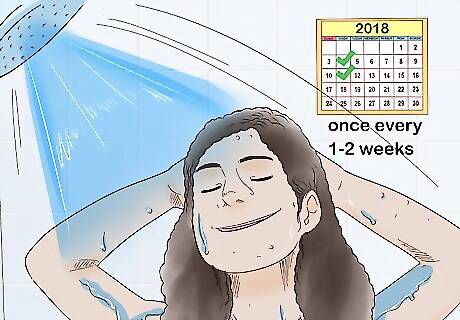
Wash your hair once every 1 to 2 weeks. The more often you wash your hair, the more you strip it of its moisture. This results in dry, brittle hair. You should wash your hair every 7 to 10 days, but you can get away with washing it once every 14 days. This will help prevent dryness and product buildup. If you can't find a shampoo and conditioner meant for ethnic hair, try to use a moisturizing shampoo meant for dry hair. Follow up with a moisturizing conditioner. If you must wash your hair more often, dilute your shampoo with 50% water and 50% shampoo.
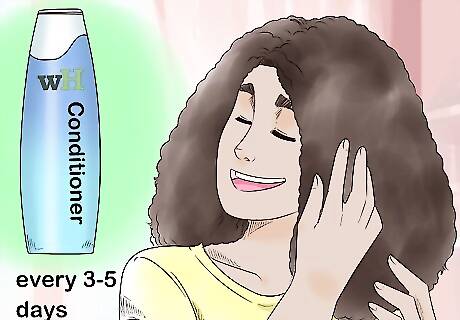
Consider washing your hair with just conditioner every 3 to 5 days. This is also known as "co-washing." It will help moisturize your hair, and keep it manageable. Co-washing is especially great for natural curls, as it keeps the hair less frizzy, more defined, and better moisturized. You can help further seal the moisture in with a natural oil of your choosing. Step things up a bit by using a deep conditioning mask once a week to twice a month. Focus the conditioner on the ends of your hair; avoid applying it to your scalp. Applying conditioner to your scalp will cause your hair to appear greasy. It will also weigh down your strands.
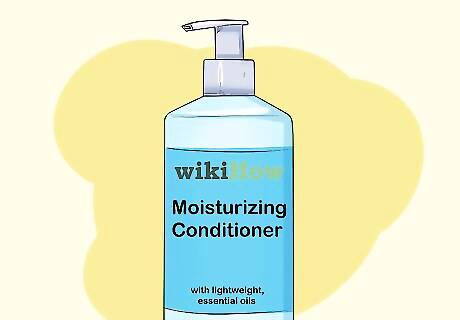
Use a moisturizing conditioner with lightweight, essential oils. Oils like grape seed oil, are more easily absorbed by hair than products like lanolin, which will only clog and weigh hair down. Lightweight oils will moisturize your hair and make it shiny, but they won't weigh it down.
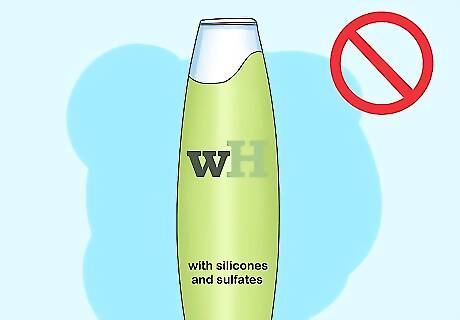
Don't use products that contain silicones and sulfates. Silicones are great for making hair nice and smooth, but they can only be removed with sulfates, a harsh cleaning agent that leads to dry hair. If you don't remove the silicones from your hair properly, your hair will get too much build-up, and end up looking dull, greasy, and lanky. Fortunately, there are lots of ways to make your hair nice and silky without using silicones, including nourishing masks and coconut oil. These products are easily washed out of your hair, without any dryness or brittleness.
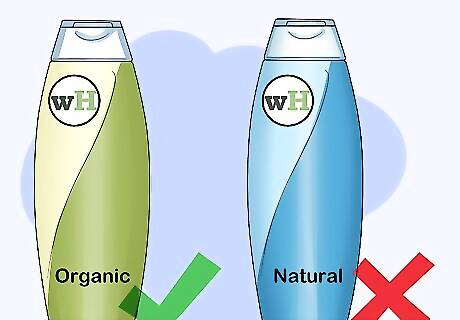
Consider using products with "organic" ingredients over products with "natural" ingredients. Organic products are strictly regulated from farming to harvesting. This means that ingredients such as avocado, coconut, and shea were grown without the use of toxic chemicals, antibiotics, and pesticides that are harmful to humans and animals. These toxic chemicals can potentially harm your hair. The term "natural" is used very loosely by corporations. An orange soda can be natural because it has an orange flavoring that once shared a compound of a fruit. High fructose corn syrup is considered "natural" just like "petrolatum."
Styling Black Hair
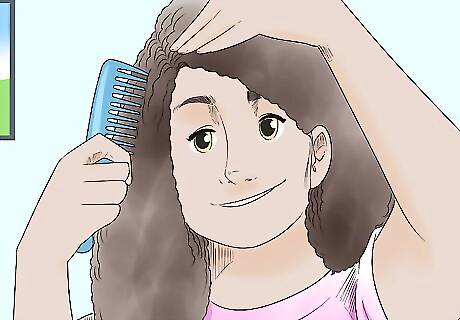
Comb carefully using a wide tooth comb. Always start from the ends of your hair first; never comb straight down from the roots. Avoid using brushes, as they will only make your hair frizzy. Lastly, avoid combing your hair every day; detangle it when necessary with your fingers. Excessive combing will break your hair off. Make sure your hair is slightly damp before you detangle. Hair is very vulnerable when wet, so if you just washed it, let it dry a little first.
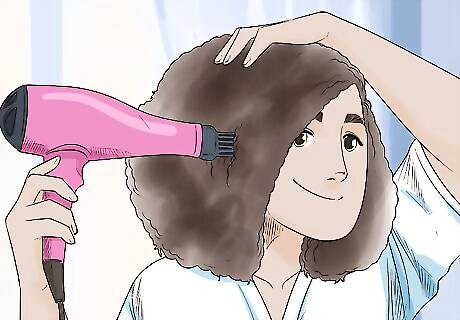
Consider using a comb attachment when blow-drying your hair. Let your hair air-dry a little first, then gently blow dry your hair using a comb attachment. This will reduce the amount of pulling and tugging, which can lead to breakage. Comb attachments can also help speed up the drying process for tightly coiled natural hair. Comb attachments help stretch and straighten natural curls, so they're great if you plan on using a flat iron after drying. Instead of air drying, you can also sit under a dryer.
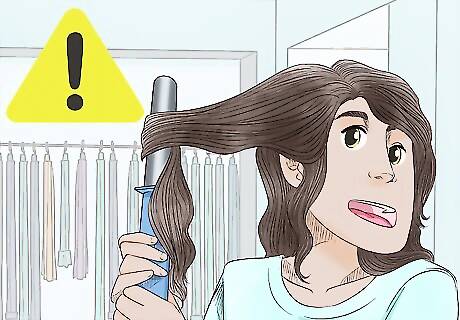
Avoid heat styling when possible, and use a lower temperature and a heat protectant spray when you do. Add the spray to your hair while it is still wet; this will help make it more effective. When styling your hair, hold the curling iron or flat iron slightly open while passing it over your hair. This way, you will avoid tugging and pulling your hair, which can lead to breakage Try to limit heat styling to two times a month maximum. Try to use the lowest temperature possible and avoid going too hot. Heat protectant sprays can only do so much. Opt for ceramic flat irons over metal ones. They will be gentler on your hair. Heat protectants come in many forms, other than sprays, including: shampoo, conditioners, creams, and serums.
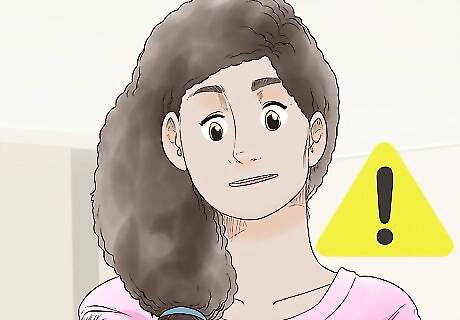
Avoid using high-stress hairstyles for long periods of time. Tight ponytails and tight braids can look chic, but they also put a lot of stress on your hair and scalp. Overtime, they can create crimps and breakage in hair. They can also stress the hair follicles, and cause thinning along the hairline. Braids, cornrows, and weaves should not hurt. If they start to hurt, they are too tight, and are damaging your hair. Avoid using rubber bands when styling your hair, as they can cause tears and breakage. Instead, use a ponytail holder without a metal clip.
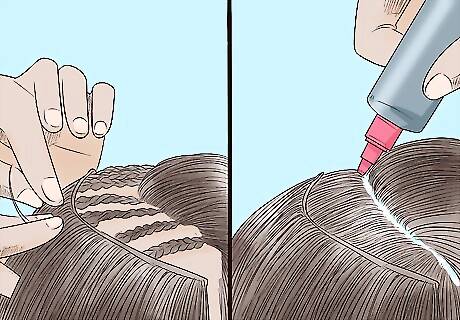
Choose sewn-in weaves over glued-in weaves. They are much better at protecting your natural hair against heat styling and outdoor elements. Glued-in weaves can rip out your natural hair upon removal, thus damaging it. If you do choose a glued-in weave, you can protect your natural hair by placing a stocking cap over it, then gluing the weave onto the stocking cap. If you are using a weave, visit your stylist every 2 to 3 weeks to ensure that it stays tight. A loose weave can tug on your hair and damage it. Change your weave every 1½ and 3 months. Let your hair rest for a few weeks after two consecutive weaves.
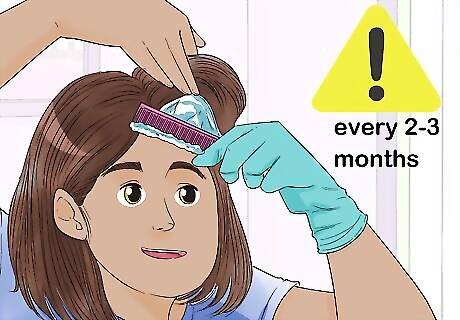
Use caution when relaxing your hair, and only do it once every 2 to 3 months. Try to get your hair relaxed professionally. If you do it at home, read the instructions carefully to prevent any damage. You should only apply relaxer to new growth, and never to hair that has already been relaxed. If you apply relaxer to previously relaxed hair, you will over-process it and damage it. Also, never leave the relaxer on the hair too long; this will cause serious damage and possible hair loss. When relaxing your hair, add some natural oil, like olive oil, to previously relaxed hair. This way, you won't accidentally over-process it. You can also use a conditioner or a pre-relaxer treatment to protect previously relaxed strands if you'd prefer to not use oil. Some stylists will recommend a touch-up every 6 weeks; that unnecessary, and actually very bad for your hair. You should get a touch-up every 2 to 3 months. Look at the ingredients: if it has too many long chemical names, try to stay away from it.

Let your hair go natural every once in a while for a few weeks. This is especially important if you are using high-stress hairstyles, such as weaves, cornrows, and braids. While fashionable, these styles put a lot of strain on your hair. Let your hair go natural for a week or two in between styles so that it can relax. If you must do something with your hair, consider wrapping a scarf or headband around it, or adding in a cute hair clip.


















Comments
0 comment